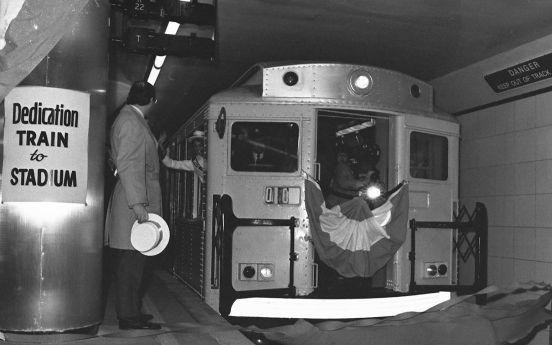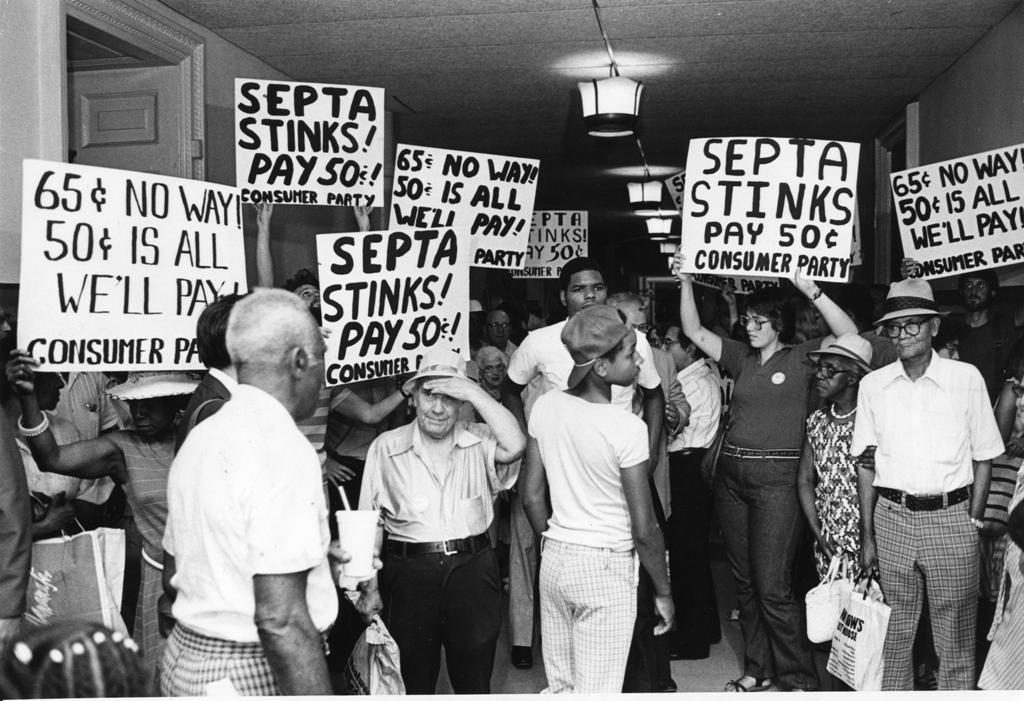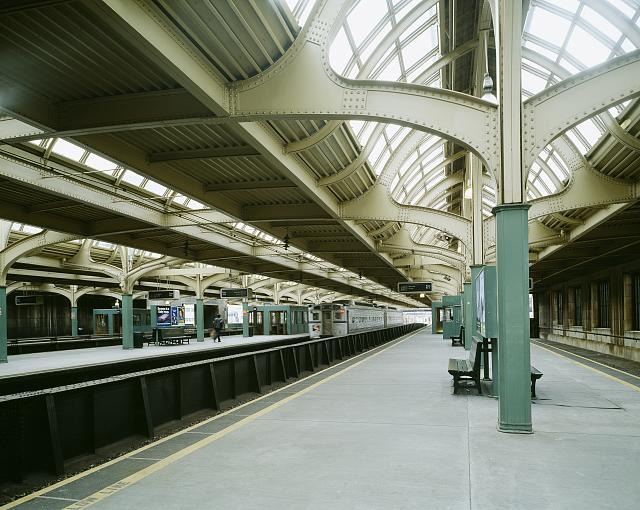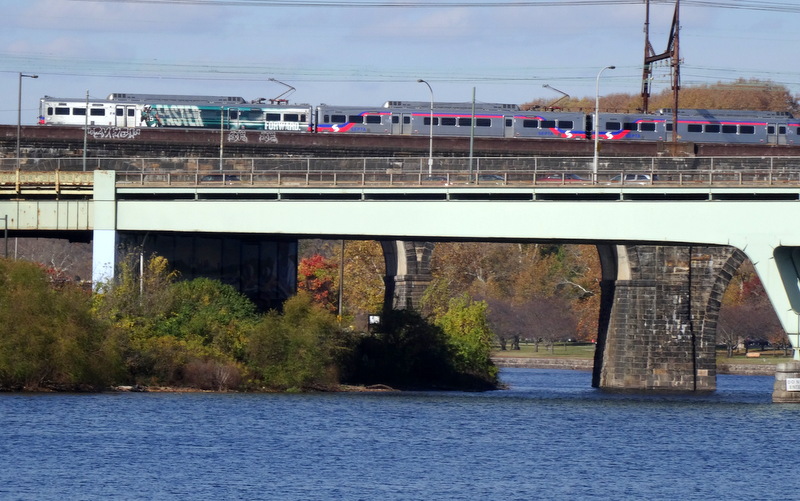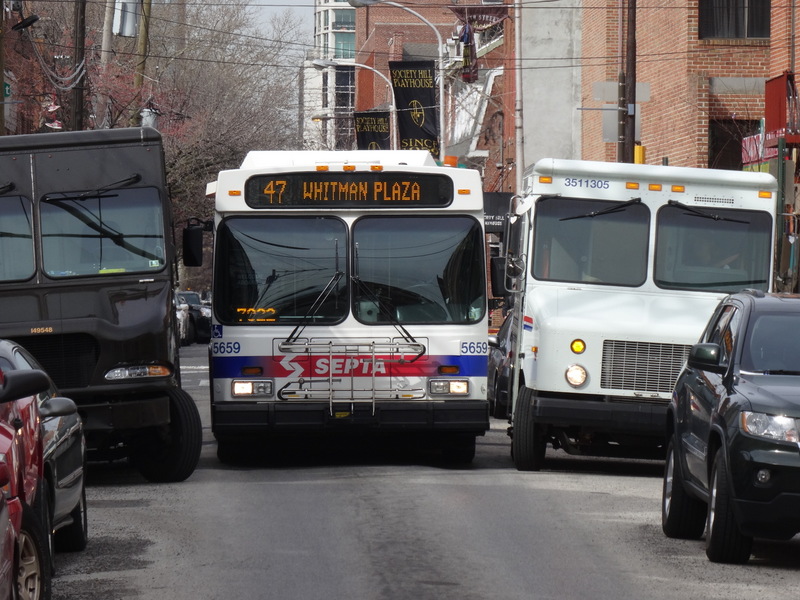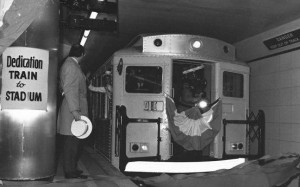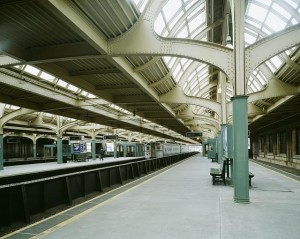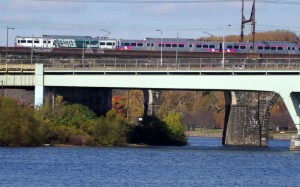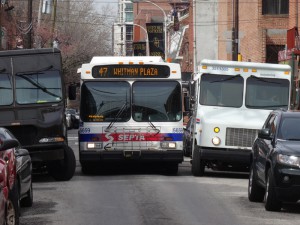SEPTA
By John Hepp
Essay
The Southeastern Pennsylvania Transportation Authority (better known by its acronym SEPTA) is a state authority charged with funding and operating public transportation in the city of Philadelphia and Pennsylvania counties of Bucks, Chester, Delaware, and Montgomery. Created in 1963, SEPTA often struggled with management issues, employee morale, strikes, aging equipment, inadequate funding, and poor public relations. Despite its challenges, SEPTA became the sixth-largest transit agency in the United States in terms of weekly ridership of its complex system of subways, buses, trolleys, and commuter rail lines.
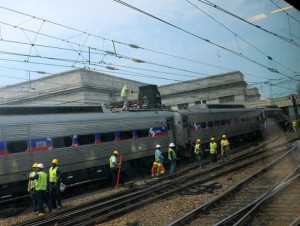
SEPTA is an example of the regional authorities formed to stem declines in urban public transportation nationwide after World War II. The need for a regional approach for Philadelphia and its suburbs developed in the 1950s as the area’s largest provider of public transportation, the Philadelphia Transportation Company (PTC), declined financially and the two largest commuter rail providers (the Pennsylvania and Reading railroads) threatened service cuts and fare increases. Philadelphia initially led the response in 1960 by subsidizing service and purchasing equipment for use on commuter rail lines in the city through a state-created but city-funded agency, the Passenger Service Improvement Corporation (PSIC). Philadelphia then joined with three of its four suburban counties to form the Southeastern Pennsylvania Transportation Compact (SEPACT) in 1961 to explore regional funding. Delaware County did not join the compact because the largest provider of transportation in the county was a private company that did not desire subsidies. Finally, Pennsylvania created SEPTA as a regional authority in 1963, and the SEPTA board (the existing SEPACT board plus representatives from Delaware County) held its first meeting on February 18, 1964.
Inherent in the way Pennsylvania founded SEPTA were two serious structural flaws that have caused political and operating issues for the authority. The SEPTA board has equal representation for each county, so that although Philadelphia has the bulk of service and ridership, it has the same vote as each suburban county. This has created political friction between the suburban counties, which tend to emphasize regional rail, and the city, which seeks higher levels of service and lower fares across the board. As a creation of the state of Pennsylvania, SEPTA also has struggled to deal with the reality of operating in a tri-state region. The agency offers few interline fares with transportation authorities in Delaware and New Jersey, and only Delaware has contributed to the costs of operating the regional rail system.
SEPTA took over the functions of SEPACT and PSIC in 1965 and the next year entered into comprehensive subsidy arrangements with the Pennsylvania and Reading railroads. In 1968, it acquired the PTC and began operating public transportation services in the city and inner suburbs. Purchases of two private suburban companies in 1970 (Philadelphia Suburban Transportation, centered in Delaware County) and 1976 (Schuylkill Valley Lines with a hub in Norristown) completed SEPTA’s first phase of acquisitions. This phase established SEPTA’s initial structure: the bus, trolley, and subway lines operated by the authority with the commuter rail lines funded by SEPTA but operated by others (first the Pennsylvania and the Reading and, after 1976, Conrail).
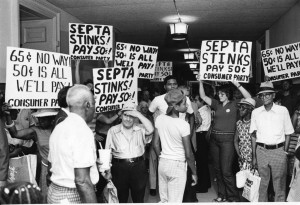
In 1983, SEPTA was forced to take over the direct operation of the region’s commuter rail lines by a federal law that allowed Conrail to withdraw from the operation of commuter trains. Because of poor planning by SEPTA, the transfer was extremely difficult and commuters suffered disruptions in service. Initially SEPTA ceased all commuter trains in the region and then, under court order, restored limited service. Shortly thereafter, a three-month strike by the rail unions caused all service to be suspended again. With exceptions of the completion of the Center City Commuter Tunnel (linking the old Reading and Pennsylvania rail lines) in 1984 and the rail line to the airport in 1986, SEPTA’s operation of commuter rail service became a story of service cutbacks, line abandonments, and fare increases.
It was not until the early twenty-first century that service and fares on the rail lines stabilized. As the second decade of the twenty-first century unfolded, SEPTA succeeded in increasing ridership, replenishing its rolling stock with more than 400 new rail cars, and improving its on-time performance. In fiscal 2013, total ridership was at 337.3 million trips, with an average weekday ridership of about one million trips. Despite this positive news, an increased operating deficit raised the possibility the system might have to shrink.
From its founding, SEPTA struggled with structural, funding, and management issues. In addition, as a creation of Pennsylvania, it has had difficulty serving a region that does not end at state lines. These issues, along with the growth of reverse commuting and labor strife, continued to challenge SEPTA and its riders in the early twenty-first century.
John Hepp is Associate Professor of History and co-chair of the Division of Global History and Languages at Wilkes University in Wilkes-Barre, Pennsylvania. He teaches American urban and cultural history with an emphasis on the period 1800 to 1940. (Author information current at time of publication.)
Copyright 2014, Rutgers University
Gallery
Backgrounders
Connecting Headlines with History
- SEPTA's etiquette reminders making inroads with riders (WHYY, December 22, 2014)
- SEPTA makes $7 million deal with Verizon that has everything but naming rights (WHYY, January 23, 2015)
- Machines in SEPTA's gleaming new station have no use for tokens (WHYY, February 2, 2015)
- SEPTA train crews seek federal intervention over work schedules (WHYY, February 10, 2015)
- Monitoring Boston's response to massive snowfalls, SEPTA works on strategy for Philly (WHYY, February 20, 2015)
- Q&A: Nelson Diaz on affordable housing, attracting new business, and expanding SEPTA (WHYY, February 24, 2015)
- SEPTA says weather partly explains why ridership is down (WHYY, March 17, 2015)
- PIDC charts a course for BSL extension to Navy Yard (WHYY, April 1, 2015)
- Additions, updgrades at SEPTA could spell a new experience for riders (WHYY, April 10, 2015)
- Is Philadelphia underestimating how many will come to see Pope Francis? (WHYY, June 17, 2015)
- SEPTA train tickets for papal visit on sale Monday (WHYY, July 20, 2015)
- Unlike most railroads, SEPTA and Amtrak on pace to implement Positive Train Control by end of year deadline (WHYY, August 10, 2015)
- Turns out a SEPTA predecessor used double-decker buses (WHYY, August 24, 2015)
- SEPTA offering more subway stops for pope weekend and credits to monthly pass holders (WHYY, September 8, 2015)
- SEPTA approves redevelopment of Frankford Transportation Center employee parking lot into needed supermarket (WHYY, September 21, 2015)
- SEPTA starts food drive for those in need (WHYY, October 16, 2015)
- In Montco, SEPTA's newest station now open for business (WHYY, November 17, 2015)
